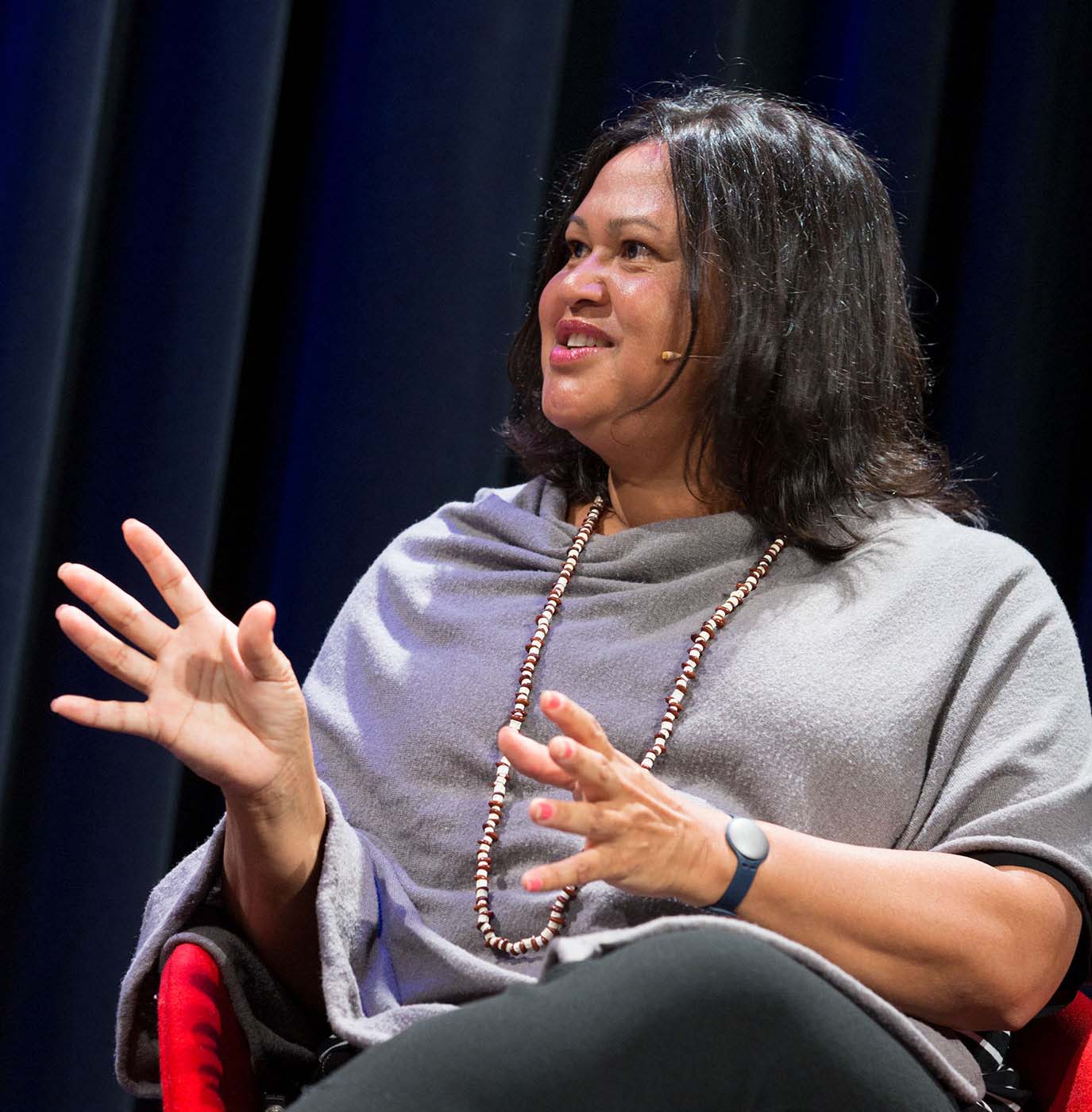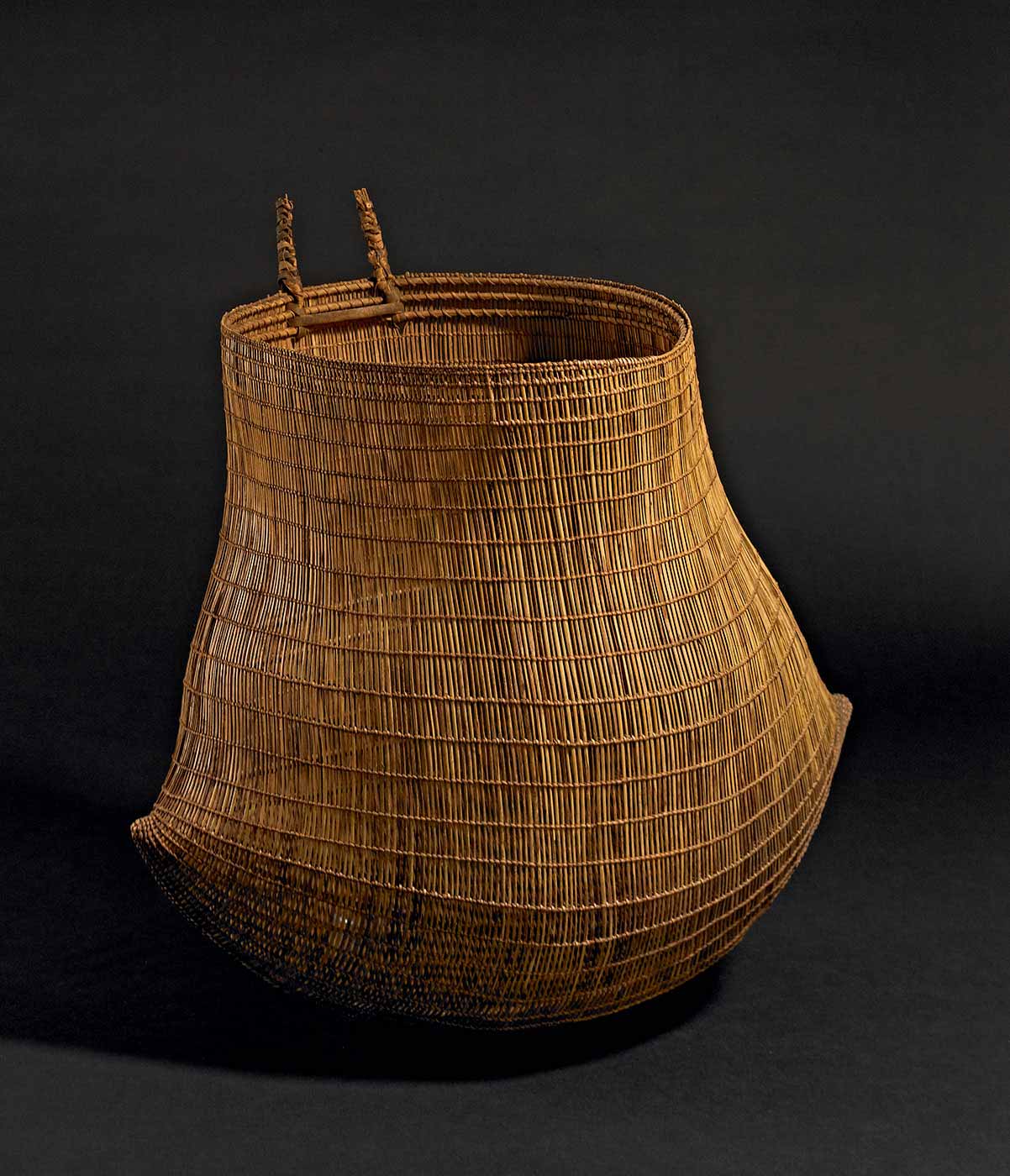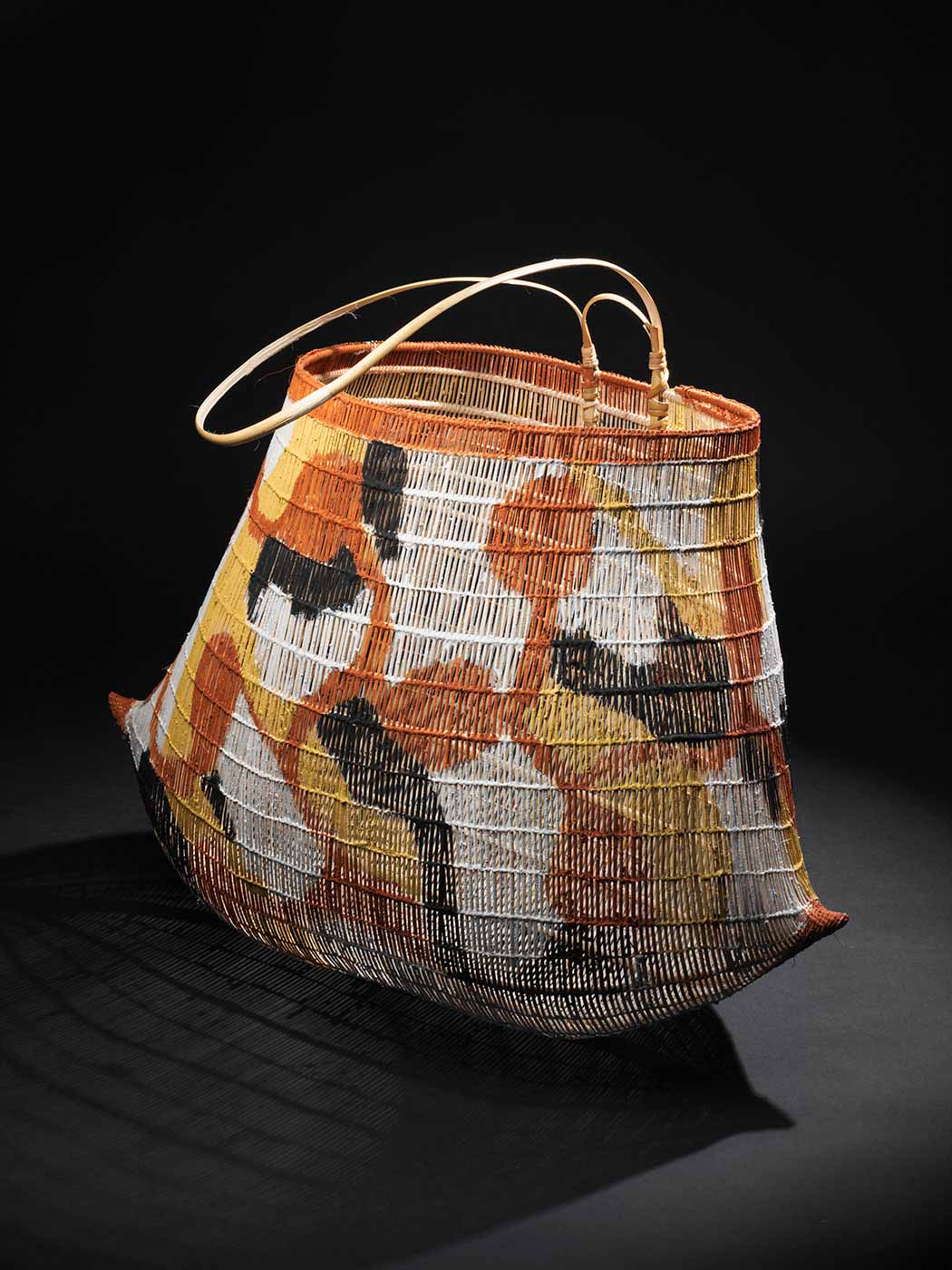
I was invited to take part in the ‘Investigating Encounters’ panel discussion at the National Museum of Australia ahead of the public launch of its Encounters exhibition. It was an honour to be in the company of Carol Christophersen, Peter Yu and countryman Ned David.
The panel discussion, facilitated by ABC RN Big Ideas presenter Paul Barclay, was thoughtful and engaging and covered all facets of this exhibition of ancestral objects from First Australians, owned by the British Museum.
Prior to the panel discussion we had the privilege of being taken through the exhibition by one of its curators, Dr Ian Coates. Seeing objects made by the hands of our ancestors in museums, galleries or cultural centres always makes me uneasy and melancholy. Knowing, however, that in Encounters these objects are not alone but sit surrounded by videos of their makers’ descendants who are telling stories new and old, along with objects new and old, made Encounters a much more comfortable experience for me.
Many of the Torres Strait Islander people’s objects are inspired by their affinity with the seas. As you walk through Encounters you can’t help but notice a dinghy with an outboard motor made by Erubian (Darnley Islander) artists out of ghost nets. This imposing, almost life-size artwork hangs high over exhibition-goers. Pleasantly, it reminded me of my Erubian grandfather, Walter. A pearl diver and fisherman, he spent hours sitting in our backyard making or repairing his own fishing nets by hand. It made me smile.
Putting aside the politics of Encounters, which are discussed more fully in our panel, what struck me about these old and new objects, is the excellence of our artisans. A 150-year-old basket from Cardwell in north Queensland sits alongside another inspired by the artefact made recently by Abe Muriata from the Girringun Aboriginal Art Centre in nearby Mission Beach. Both baskets took my breath away.
One of the ironies is that if our ancestors’ objects hadn’t been collected we wouldn’t have the benefit of seeing them. For historical reasons, the skills and traditions of our ancestors haven’t always been passed on continuously. The fact that the British Museum’s 151 artefacts are here now gives the 27 communities linked to them an opportunity to see skills that until now have never returned to Australia.
This can help to enhance the renaissance of Indigenous craftsmanship and help to reconnect us back to our ancestral roots. It was culturally affirming for me to see them, and gives you a sense of pride.
The Encounters exhibition is only in Canberra until the end of March and I urge all Australians to go and see it at least once. I’ve been twice and I’ll revisit it again soon. See you there.
You may also like

